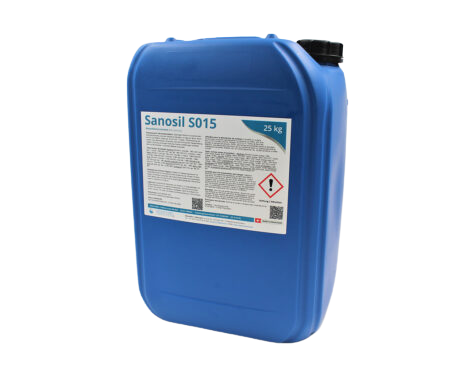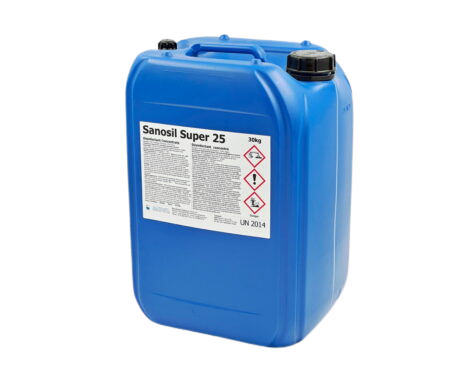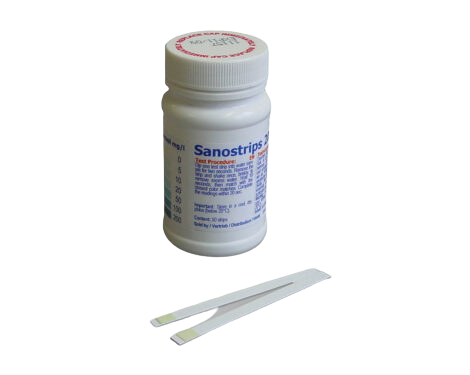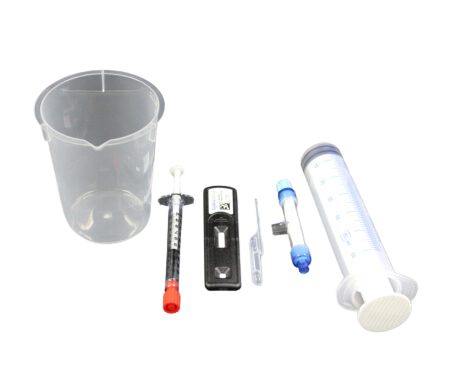[breadcrumb]
Legionellae, an underestimated hazard
Legionella water treatment is an important issue because legionellae are bacteria which can cause severe pneumonia known as Legionnaires‘ disease. They inhabit water lines, air conditioners, air washers, fountains and cooling towers. Usually, legionellae are harmless. They only become hazardous when optimal temperatures allow their populations to flourish AND they are in aerosolising water systems where they might be inhaled.
LEGIONELLA IN HOUSEINSTALLATIONS: SHORT INFO (COMIC)
LEGIONELLA IN COOLING TOWERS / COOLING CIRCUITS: SHORT INFO (COMIC)
LEGIONELLA CONTROL WITH SANOSIL S015: STEP BY STEPstep by step
LEGIONELLA CONTROL WITH SANOSIL SUPER 25: STEP BY STEP
Legionella in the water : a problem to solve with legionella water treatment
Legionella water treatment should not be forgotten since legionellae in water systems constitute a considerable hazard, known at least since 1976, when the first known epidemic claimed several casualties among participants at an American Legion congress, from whence the bacteria acquired the name.
The source of infection was a contaminated air conditioning system in which the legionellae bred before being inhaled by the victims.
Ever since, reports of legionella infections keep cropping up around the world — for example, in Germany, where a major outbreak due to an unserviced cooling tower caused the death of several people in 2010. To be fair, however, it should be noted that although legionellae can potentially be lethal, there are always a number of different factors at play in the case of infection with Legionnaires‘ disease.
[expander_maker id=”2″ more=”Read more” less=”Read less”]What are legionellae, where are they found and why are they dangerous?
Legionellae are rod-shaped bacteria that occur naturally in fresh water. (About 80% of all infections with legionella are caused by the species legionella pneumophila). In small quantities, legionellae are not dangerous and do not cause problems if inhaled. If they enter a water system at temperatures of between 30 to 40 degrees Celsius, however, they can multiply rapidly. If that water is then aerated, such as by a shower, whirlpool bath, cooling tower or air conditioner, this can result in aerosols contaminated with legionellae. If the aerosols are inhaled, then minor infections with symptoms resembling influenza may occur, which usually subside within a few days without requiring treatment.
In contrast, Legionnaires‘ disease is a severe infection/pneumonia caused by legionellae, which is not always identified as such in time and thus not always treated with the right antibiotics soon enough. Even though only about 10% of all legionella infections lead to pneumonia, over 30% of those cases are lethal, depending on the type and duration of treatment.
Severe legionella infections often occur in hospitals, retirement homes, care homes for people with learning disabilities, and rehabilitation centres. This is due partly to the presence of people who are particularly susceptible to this type of infection, and partly due to the type of sanitary installations (big buildings, long pipes). Because of this, hotels can also be at risk.
However, the boom in energy-saving water heaters using geothermal and solar heat poses huge risks if the problem of legionella is not considered when planning the systems.
Legionella water treatment 1: Using heat to combat legionella
Legionellae thrive best in temperatures between 30 to 45 degrees Celsius; they stop multiplying at around 50 degrees, and start to die off above 60 degrees. This means the easiest legionella prevention and control method is to (temporarily) raise the water temperature above 60 degrees. Automated legionella disinfection temperature control modes accomplish this reliably. Modern systems even subject potable water to a form of pasteurisation. It is critical to keep the water at a temperature lethal to legionellae for some time.
In particular, junctions of hot and cold water must be considered. If a faulty thermostatic mixing valve allows untreated cold water to enter the hot water pipes, the temperature there may drop to the ideal breeding temperature for legionellae, undermining all efforts to thermally combat legionellae at a central location.
Legionella water treatment 2: Using chemicals to combat legionellae
Wherever structural conditions (e.g. listed buildings), long pipes or excessive energy expenditure rule out temperature control as a means of combating legionellae, there are chemical alternatives which can be considered as on of legionella control solutions.
Chlorine, chlorine dioxide, hypochlorous acid or anolyte are some methods used as legionella prevention. There is a catch, however — in addition to the water changing in taste and smell in some cases, pipes and seals are exposed to severe corrosion.
Another legionella water treatment challenge is the fact that potable water is occasionally also inhabited by protozoans such as amoebae. Although these are not an immediate hazard, they do provide shelter and protection to the legionellae, which live within the protozoans in a symbiotic relationship. As a result, they give the legionellae excellent protection against disinfectants. Biofilms also provide protection which should not be underestimated, as not all disinfectants are equally effective against them.
Lastly, the public has only recently become aware that many disinfectants, particularly those containing chlorine, merely put the legionellae in a VBNC state (viable but nonculturable) instead of killing them off. This provides a false sense of security with regard to the effectiveness of these substances for legionella disinfection.
However, many people are opposed to the idea of adding chemicals to potable water. This can be sidestepped elegantly when combating legionellae by carrying out occasional high-dosed shock treatments instead of low-dosed permanent legionella water treatment. As no potable water is tapped while disinfecting, it is possible to use chemicals and dosages which are not necessarily listed for continuous potable water treatment. It is important that not only legionellae, but also biofilms and protozoans are killed.
Legionella water treatment 3: Using Sanosil disinfectants to combat legionellae
Preparation: it is essential to identify any weak points, such as air locks, dead legs, branches to rarely used line sections, water treatment equipment such as water softening units, long lines and so forth and mark them on the piping diagram. Experience has shown these to be the main sources for contamination with legionellae. Dormant boilers and reservoirs are also considered breeding grounds for legionellae and require attention when it comes to legionella prevention. A lower limit of 100 cfu per 100 ml of water has become established. 10,000 legionellae per 100 ml water constitutes an acute risk that requires immediate action.
Once a dosing pump has been attached to the main water line and the shock solution (Super 25 or Sanosil S015 are recommended for disinfection for legionella) added, each section of the piping is thoroughly flooded and rendered free of air bubbles. Potable water should not be withdrawn during the reaction time (4-12 h).
After the reaction time, the entire pipe system is flooded and rinsed.
To ensure successful legionella prevention, that is followed up with low permanent dosing to prevent legionellae from growing, and/or establishing an inspection and maintenance plan for periodic or needs-based shock legionella disinfection. [/expander_maker]




